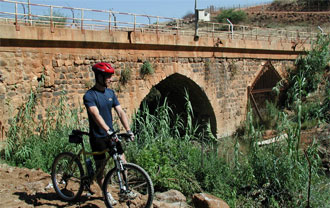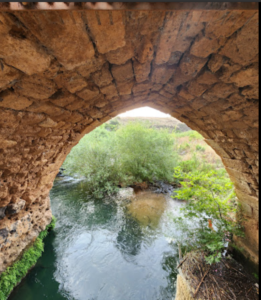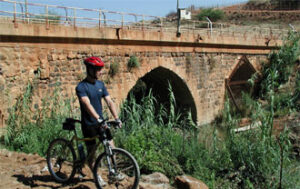Hi,
A couple of weeks ago, we had a short visit to the Ghajar bridge over the Hasbni stream (or, as we call it, the Roman bridge). Now, we can no longer access the area as it is too dangerous for the fear of Hezbollah attack.
Before the Six day War, the bridge was the point of border between Syria, Lebanon and Israel. But as Israel had conquered the Golan heights and Mount Hermon, Syria has not longer access to the area. And today, the bridge is the border between Israel and Lebanon.
The border road and the border fences are passing on top of the bridge. For that, a new concrete addition was cast on top of the old Roman bridge on 1969.
The old ancient Roman bridge is made of 3 arches crossing over the Hasbani stream. It is made out of Basalt rock. Some argue the bridge to be from the Mamluk time, 1260-1517, and hence much more younger (up to 800 years old, and not 2,000 years old).
Take Care
Gad
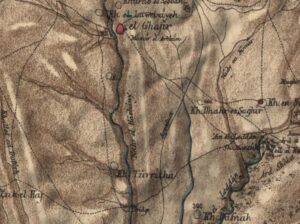 PEF (Palestine Exploration Fund) map from 1880, where you see Ghajar on top of the pic and the bridge on the bottom of the pic (Source: AmudAnan.co.il)
PEF (Palestine Exploration Fund) map from 1880, where you see Ghajar on top of the pic and the bridge on the bottom of the pic (Source: AmudAnan.co.il)
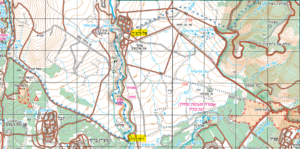 An updated map with the bridge of name marked as Jiser Ghajar (Ghajar bridge). Even without reading Hebrew you can see the word I marked up is the same (Source: AmudAnan.co.il)
An updated map with the bridge of name marked as Jiser Ghajar (Ghajar bridge). Even without reading Hebrew you can see the word I marked up is the same (Source: AmudAnan.co.il)
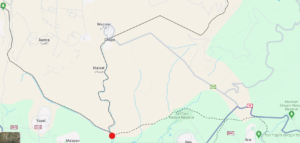 A map showing the location of bridge (marked in red dot) on Israel-Lebanon border (continues line) and on the former Israel-Syria border (in dot line) (Source: www.google.com/maps)
A map showing the location of bridge (marked in red dot) on Israel-Lebanon border (continues line) and on the former Israel-Syria border (in dot line) (Source: www.google.com/maps)
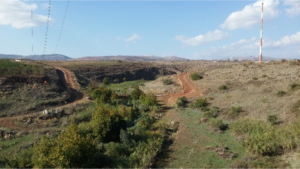 A general view the area of the bridge over the Hasbani stream, you can see the border road going down from both of the stream sides (Source: AmudAnan.co.il)
A general view the area of the bridge over the Hasbani stream, you can see the border road going down from both of the stream sides (Source: AmudAnan.co.il)
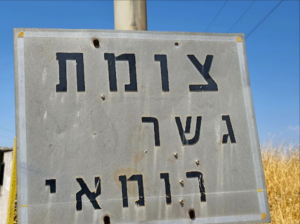 A sign above the bridge, Roman Bridge Junction (Source: Google Maps, Victor Gaidar)
A sign above the bridge, Roman Bridge Junction (Source: Google Maps, Victor Gaidar)
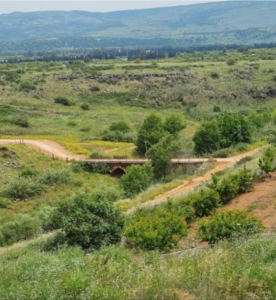 A view of the bridge from the view point in Snir Nature Reserve (Source: AmudAnan.co.il)
A view of the bridge from the view point in Snir Nature Reserve (Source: AmudAnan.co.il)
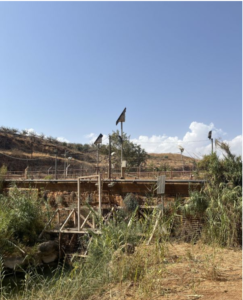 The bridge today on a closer look (Source: AmudAnan.co.il)
The bridge today on a closer look (Source: AmudAnan.co.il)
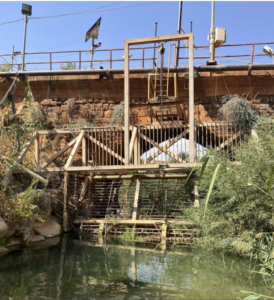 The new concrete road on top, the Roman bridge from Basalt rocks in the middle and on the bottom – the water barrier (Source: AmudAnan.co.il)
The new concrete road on top, the Roman bridge from Basalt rocks in the middle and on the bottom – the water barrier (Source: AmudAnan.co.il)
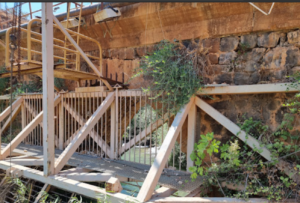 The cage on the bridge (Source: Google Maps, Victor Gaidar)
The cage on the bridge (Source: Google Maps, Victor Gaidar)
One of the bridge arches, looking north towards Lebanon on the other side (Source: Google Maps, Victor Gaidar)
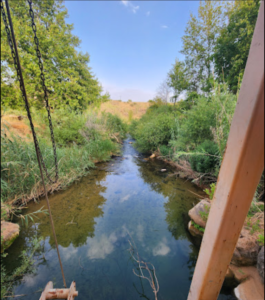 The Hasbani river flowing south (Source: Google Maps, Victor Gaidar)
The Hasbani river flowing south (Source: Google Maps, Victor Gaidar)
A pic of the bridge from a post added 2007, before the water barrier was added and it was still accessible (Source: www.shvoong.co.il)
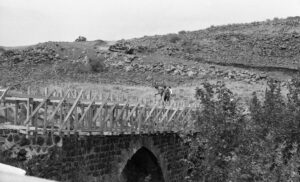 Restoring the bridge with concrete top on October 1969, on the background you can see the bulldozers working on making the new border road towards east, as before it was the Syrian-Lebanon border (Source: he.wikipedia.org)
Restoring the bridge with concrete top on October 1969, on the background you can see the bulldozers working on making the new border road towards east, as before it was the Syrian-Lebanon border (Source: he.wikipedia.org)
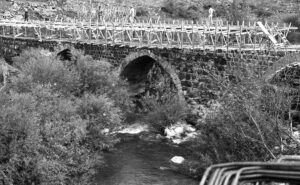 Another angle of the works done by Maatz (Public Works Department (PWD)) (Source: he.wikipedia.org)
Another angle of the works done by Maatz (Public Works Department (PWD)) (Source: he.wikipedia.org)
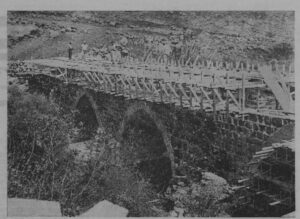 Maatz (PWD) restoring now an old Roman bridge on the Hasbani stream. The border with Lebanon now pass on the bridge (Source: www.nli.org.il)
Maatz (PWD) restoring now an old Roman bridge on the Hasbani stream. The border with Lebanon now pass on the bridge (Source: www.nli.org.il)

